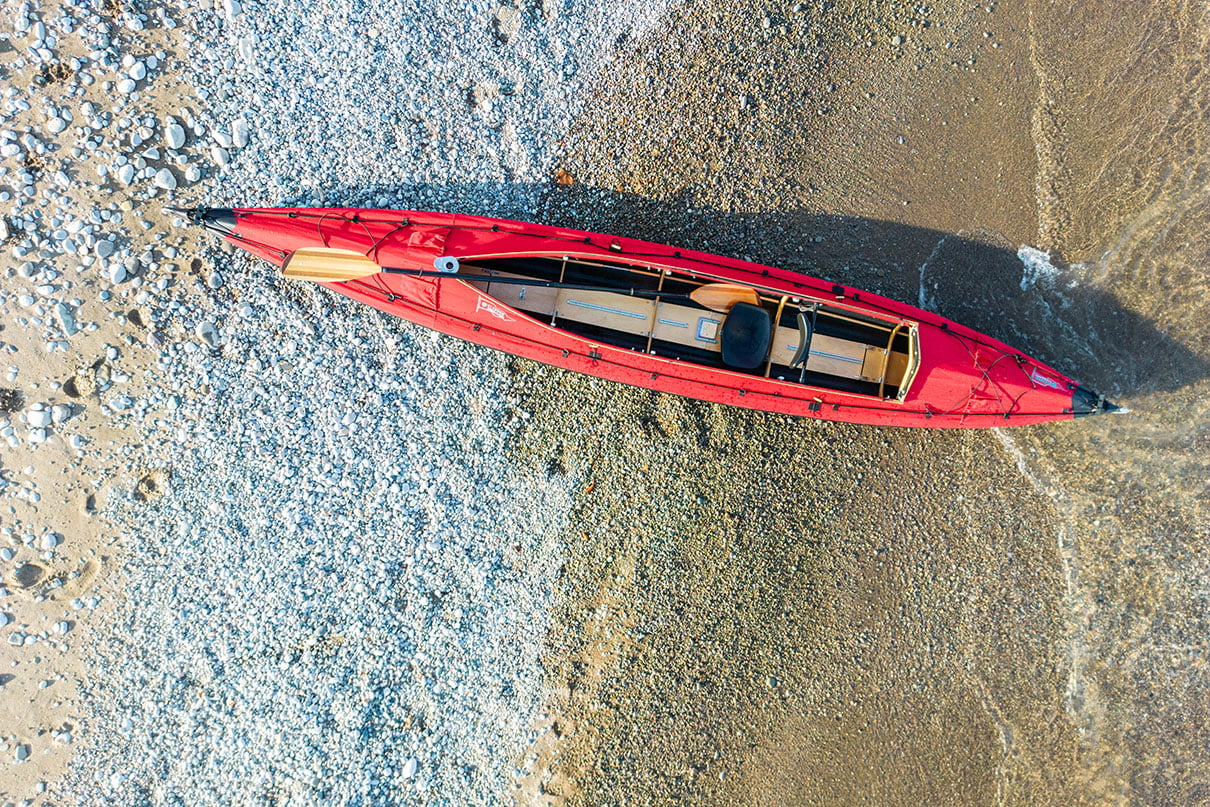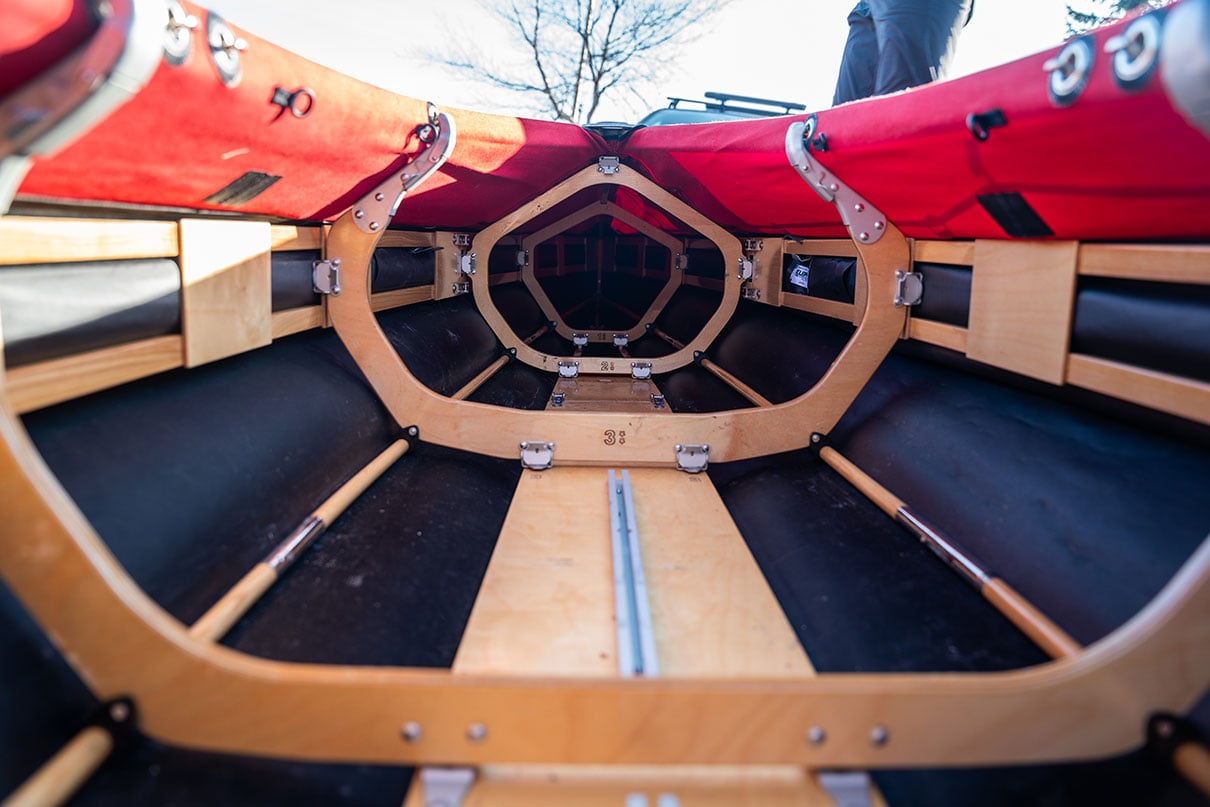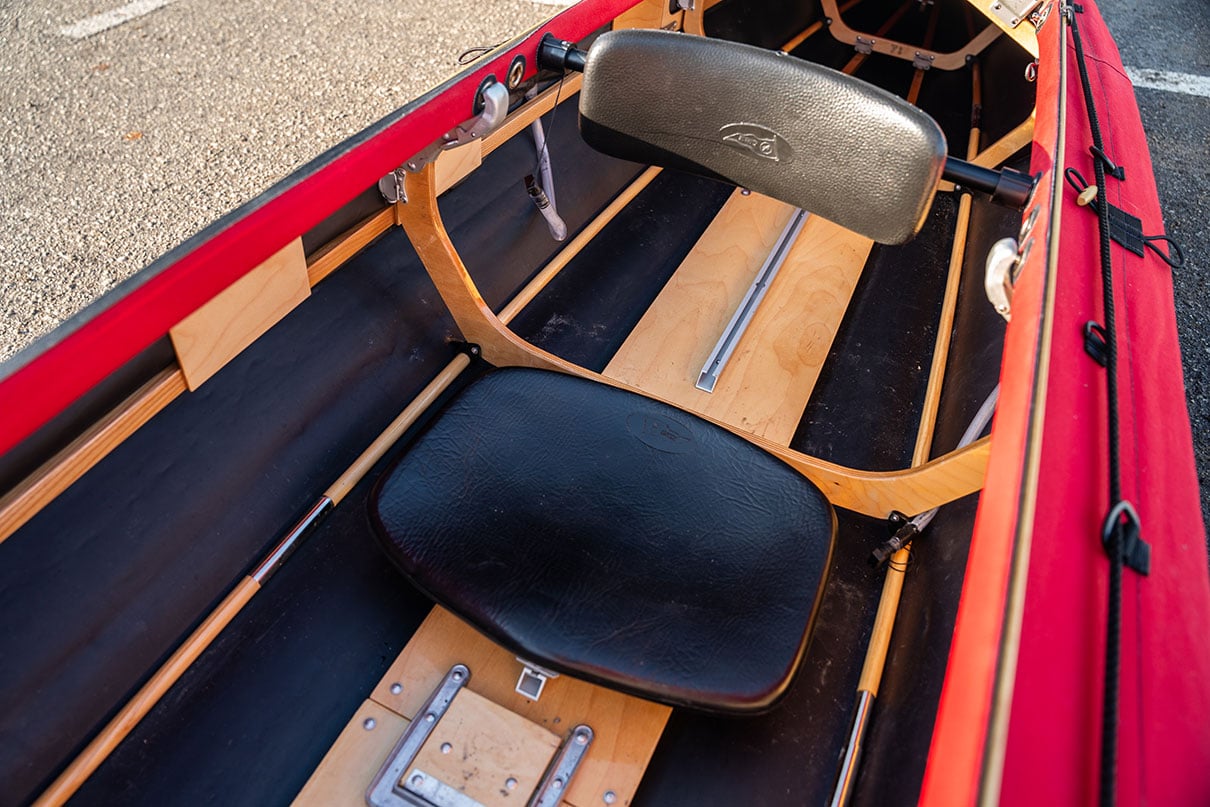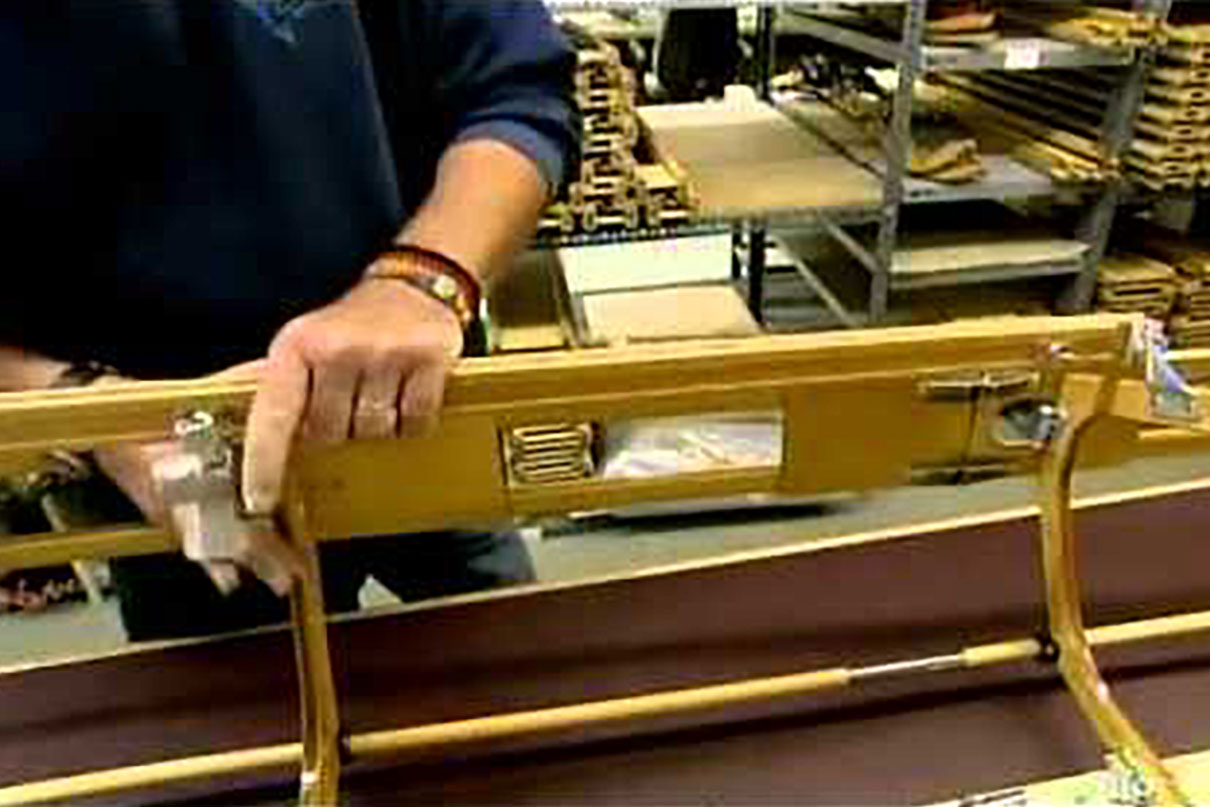With the possible exception of orchestral instruments, few products have changed as little as the Klepper kayak since the design was first produced by master tailor Johann Klepper in 1907. The Klepper Faltbootwerft GmbH company, established in 1919, was synonymous with kayaking until composite and plastic kayaks took over after the Second World War. Kleppers swept the folding kayak events at the 1936 Olympics, won every whitewater slalom world championship until 1961, and have floated a large share of the all-time great sea kayak expeditions, including the first two Atlantic crossings by kayak—Franz Romer’s in 1928 and Hannes Lindemann’s in 1956.
Klepper’s expedition capability is incontestable. But I wondered about its relevance to the modern kayaker, such as a suburban dad with a vastly expanded array of kayak models to choose from. The Klepper Aerius is still being produced essentially unchanged since its introduction in 1954—a cotton canvas hull and wooden frame constructed with American white ash and Finnish birch—at a cost that makes it one of the dearest kayaks on the market. How does it measure up?
Enthralled by Klepper’s venerable reputation and its comparisons to being the Mercedes-Benz of folding kayaks, I leapt at the chance to test the Aerius 545 and find out.
Klepper’s legendary expedition model still goes the distance
Klepper Aerius 545 Expedition Specs
Length: 17’11”
Width: 34”
Weight: 75 lbs
Capacity: 840 lbs
MSRP: $6,799 USD
klepper.de
The Aerius is the company’s longest model and can be rigged for either solo or tandem paddling. Mine arrived in three green canvas bags that maxed out the cargo space of my midsized SUV. The longest and heaviest bag contained the frame pieces and can also hold the optional two-piece paddles. A second bag held the folded skin of rubberized canvas. An assortment of seats and backrests loosely filled the third, smallest bag. In total, 29 separate components fill the bags.
I arrived at a beachside parking lot at the appointed time to meet the photographer for this review and began by dumping the frame bag to unleash a clatter of clear-varnished plywood frame parts. I’d prepared by watching the video of a man named Geord Binder assembling a Klepper in under four minutes. To the chagrin of my photographer, my first attempt took about 20 times longer, punctuated with repeated consultations with the Klepper instructional video and several conversations with curious passersby. Klepper construction is one part craftsmanship and one part public relations exercise, as you will inevitably be pressed to acknowledge various obtuse statements such as, “So, you’re going to put that thing together and paddle it?” Or, if my wife happens to be in the vicinity, the more existential question, “What’s the point?”
The Klepper frame consists of longitudinal pieces connected by hinges that open to form either the bow or stern sections, color-coded and labeled in German, English and French (heck – stern – arriere). Numbered cross-sectional pieces snap onto the long pieces, shaping them into something resembling two halves of a biplane or the museum skeleton of a prehistoric fish. You jam these into the boat skin unfurled from the second bag and lever them together in the center to tension the whole frame into the skin.

Finishing touches include crafting the cockpit coaming, a wishbone-shaped piece of wood connected by a hinge at the bow end; inflating the air sponsons in the sides of the hull; and diving into the third bag for backrests and seats, which clip into metal rails on the plywood floor to slide fore and aft, and can be repositioned for paddling either tandem or solo.
I was on the water in 90 minutes. After some practice, assembling the 545 can be done in 20 to 30 minutes—about half the time if you have help—or double if you’re adding a sailing rig.
With its open cockpit, the Aerius felt like a hybrid of a kayak and a canoe. The high coaming makes for a very secure, cocooned feel and a dry ride, even without the spraydeck, which like rudders, sails, carrying bags, paddles and all other accessories, is sold separately. Reaching over the coaming can be a bit awkward, but optional plastic risers can be added to raise the seats by up to three and a half inches.
Klepper Aerius 545 on the water
I have heard folding kayaks are superior in heavy seas because they flex to absorb the force of the waves. On this day, there was a low swell. The frame did flex a bit; it was hard to tell if this was a boon, but the craft seemed to say, “I have crossed the Atlantic; this is nothing.” Kleppers have descended the Colorado River and the Amazon, the Upper Nile and the Danube, tackled the North Pole and rounded Cape Horn no fewer than three times. I wouldn’t dare question their rough-water chops.
I can comment on agility, however. At just under 18 feet long and 34 inches wide, the 545 is a Westfalia Vanagon of the Seas, more tuned to compact, long-haul versatility than raw performance. There is more than ample space for gear in the hollow bow and stern, and along the hull’s sides. It’s incredibly stable and unresponsive to tilting. It felt stereotypically German: stolid and determined. I could see spending some weeks paddling in a straight line. Or sailing all day in an eight-knot breeze to an island where I would produce a picnic with whole place settings out of a wicker basket, while my heart’s true love read a novel in the bow and I languorously dragged my fingers in the warm water and time stood still.

Back home, I spread the disassembled Klepper in my basement to vacuum the sand out of the skin and dry it out for long-term storage. It lay there like the broken pieces of some da Vinci flying contraption or a mythic free-ranging animal I would soon have to set free.
I decided Kleppering may be its own sport, existing in its own distinct dimension—not quite kayaking, not quite canoeing, not quite sailing, but some combination of all three, suited for people in unique possession of time and resources. There are certain inarguable advantages. Key among them are portability, longevity and versatility. The Klepper is, of course, ideal for any destination to which you need to fly, if you don’t mind checking three bags.
It’s also infinitely more repairable and long-lasting than almost any other type of watercraft. Klepper supplies replacement parts for every component, even for its discontinued models. Skins are said to last 30 years or more and can be fully replaced for about half the cost of a new kayak for just about every Klepper edition dating back to 1926.
Perhaps the greatest selling point of the Klepper is its ability to convert into a sailboat fully capable of upwind sailing in light to moderate winds. I was sad not to have been able to test the S2 sail kit, which includes a mainsail and a foresail totaling 54 square feet, for an extra $1,647.
Someday, I may take up Kleppering. For now, when most of my paddling trips are shorter than the time it would take to assemble one of these floating works of virtuosity and pack it up again, I’m sorry the Klepper and I must part ways. I take solace in the fact that, if the last 100 years are any indication, when I’m ready to mount an expedition to the South Seas or retire and take up kayak sailing, there will still be a Klepper waiting for me.
The Klepper Aerius 545 is speedy and stable, and it won’t lose its composure in high seas. | Feature photo: Colin Field






 This article was first published in Issue 72 of Paddling Magazine.
This article was first published in Issue 72 of Paddling Magazine. 
